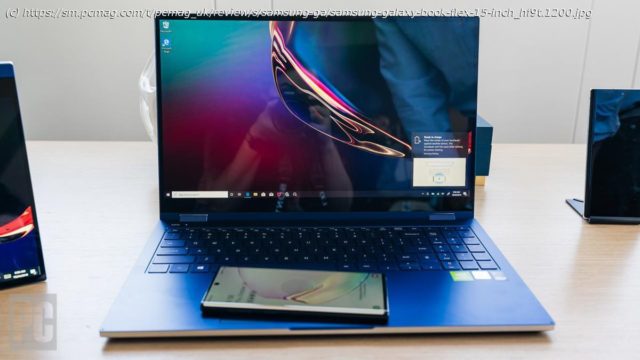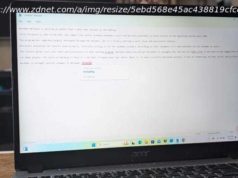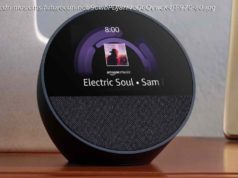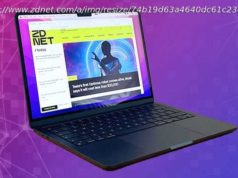With a bright, vivid QLED display and a stylish, lightweight chassis, the Samsung Galaxy Book Flex is an excellent large-screen 2-in-1 convertible laptop.
For the same $1,399 price as Samsung’s flagship Galaxy S20 Ultra phone, you can pick up the company’s newest flagship laptop, the Galaxy Book Flex. It’s a sign of just how ridiculous phone prices have become, but it’s also evidence that Samsung can make a well-designed laptop at a reasonable price, albeit a still-lofty one in absolute terms. The Galaxy Book Flex, available with either a 13-inch or 15-inch screen, has most of the features we look for in a 2-in-1 convertible laptop, including a gorgeous touch-enabled display and a surprisingly light weight. Despite a few software bugs and an awkward keyboard, it’s an excellent option for people who need a flexible notebook with a large, high-quality display.
Our 15-inch Galaxy Book Flex preview unit is configured differently from the U. S. retail version. The differences in memory, storage, and graphics could affect computing performance, so we’re not giving it a rating until we can test the final retail configuration. However, all of the other features discussed below are the same as the ones on the version consumers can buy.
The First QLED Laptop
With the Galaxy Book Flex, Samsung brings its QLED display technology to portable PCs for the first time. Both screen sizes have a full HD resolution of 1,920 by 1,080 pixels. Similar to OLED screens, which stormed the premium laptop market last year, QLED displays use familiar LCD panels and LED backlight arrays. The difference, “Q,” is short for quantum dots, Samsung’s marketing term for nanoparticles that emit or alter light at different frequencies when exposed to electricity. This light-tweaking can produce more precise color in a wider range than the LCDs illuminated by white LEDs can.
SEE ALSO: Microsoft Blames Liquid Nitrogen for Surface Devices Using Soldered RAM
Indeed, colors do appear brilliant on the Galaxy Book Flex, though I’m not sure how much of the excellent experience is attributable to the QLED technology and how much is thanks to high dynamic range (HDR), which many other laptops in this price range also support. Overall, my experience of testing the Galaxy Book Flex was more akin to using a laptop with a 4K screen. Only when editing text did I notice the ever-so-slightly fuzzy lines of text that are a staple of 1080p and lower resolutions.
The QLED display also has an extraordinarily high rated maximum brightness of 600 nits. The highest brightness level we typically see on consumer laptops is 500 nits, and even that is easily viewable out of doors (though not in direct sunlight). The extra 100 nits has Samsung confident enough to market the Galaxy Book Flex as designed for outdoor viewing.
But constantly operating a display at 600 nits will have a significant negative effect on battery life, and you certainly don’t need that level of brightness in your living room. So you must unlock the maximum brightness level by activating Outdoor+ Mode in the Samsung Settings app. Letting the display turn off when the laptop goes to sleep will deactivate Outdoor+ Mode, just in case you forget to turn it off when you come back inside.
Like all 2-in-1 convertible notebooks, the Galaxy Book Flex’s display has a 360-degree hinge. You can transform the laptop into a tent for watching movies or an easel for displaying a presentation. You can even fold it completely flat, with the screen parallel to the keyboard base, for use as a tablet.
It Fits in Your Hands
Normally, a large-screen laptop with a 360-degree hinge is unwieldy to hold as a tablet for very long because it’s too heavy. That’s less of a problem with the Galaxy Book Flex, however. The 15-inch version weighs just 3.4 pounds. That’s a bit above the 3-pound maximum for our definition of an ultraportable laptop, but it still weighs far less than competitors like the HP Spectre x360 15, the Lenovo Yoga C940, or the Dell XPS 15 2-in-1, all of which are at least a pound heavier.
Meanwhile, the 13-inch version of the Galaxy Book Flex weighs just 2.5 pounds, not far above the 1-kilogram (2.2-pound) holy grail for premium ultraportables. Both versions are also quite svelte, with the 15-incher measuring 0.5 by 11.9 by 8 inches (HWD). That compares favorably to the 15-inch Yoga C940, which measures 0.77 by 14 by 9.4 inches.
One reason the Galaxy Book Flex is so thin and light is thanks to super-efficient but powerful components. The Core i7-1065G7 processor, from Intel’s latest 10th-generation “Ice Lake” family, is a quad-core chip with Hyper-Threading support and a 1.






